Lookalikes:
 Hebeloma Genus
Hebeloma Genus Key to Gilled Mushrooms Key
Key to Gilled Mushrooms Key Agaricales Order
Agaricales Order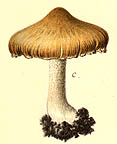 Brown, Olive, Orange or Tan Spored Suborder
Brown, Olive, Orange or Tan Spored Suborder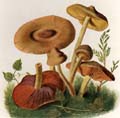 Terrestrial Brown Spored Family
Terrestrial Brown Spored Family Dermocybe Subgenus
Dermocybe Subgenus Myxacium Subgenus
Myxacium Subgenus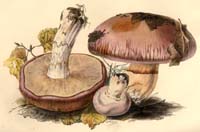 Phlegmacium Subgenus
Phlegmacium Subgenus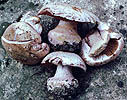 Sericeocybe Subgenus
Sericeocybe Subgenus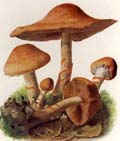 Telamonia Subgenus
Telamonia SubgenusLookalikes: Hebeloma Genus Hebeloma Genus |
 Glossary |  Mushrooms |  |  People |  Newsletter |  Events |